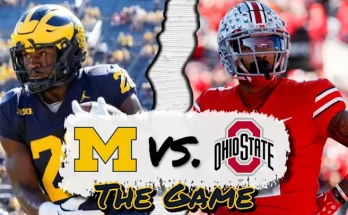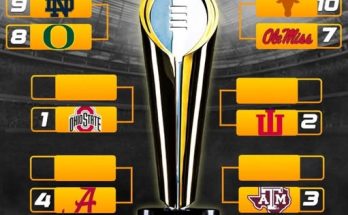Ducks defeat the Oilers with four goals in the first quarter.
The Ducks’ Stunning Victory Over the Oilers: A Four-Goal First Quarter Surge
In an unforgettable night at the rink, the Anaheim Ducks delivered an explosive performance against the Edmonton Oilers, scoring four goals in the first quarter and stunning fans and critics alike. The game, filled with relentless energy, skill, and precision, showcased the Ducks at their very best. The Oilers, typically known for their high-flying offense and dynamic play, found themselves flat-footed and unable to respond to the Ducks’ early onslaught.
This remarkable victory can be analyzed not just through the lens of scorelines and stats, but through the strategic decisions, player performances, and overall atmosphere that contributed to the Ducks’ dominant first quarter. Let’s dive into the factors that played a pivotal role in this stunning 4-0 lead over the Oilers.
The Ducks’ Early Momentum: A Lightning Start
The moment the puck dropped, it was clear that the Ducks were intent on setting the tone early. The Oilers, who typically thrive with a fast-paced start, were caught off guard by the Ducks’ relentless pressure. From the get-go, Anaheim’s offensive zone time was unparalleled, pinning Edmonton back into their own end for long stretches and forcing turnovers in dangerous areas.
What stood out most about the Ducks’ opening quarter was the way they consistently capitalized on every opportunity. The first goal came within just minutes of the opening faceoff. A deft pass from Trevor Zegras to Troy Terry created a perfect one-on-one situation with Oilers goaltender Stuart Skinner. Terry, known for his speed and excellent finishing ability, made no mistake, firing a low shot past Skinner to give the Ducks the early lead.
The Ducks’ second goal was even more impressive, as it came off an aggressive forecheck. Anaheim’s fourth line, led by the hard-working Max Jones and Derek Grant, relentlessly hounded the Oilers’ defensemen. A crucial turnover deep in the Oilers’ zone allowed Jones to pounce on the puck and send a quick pass across the crease to Grant, who buried it past Skinner. The crowd erupted, and at that moment, it was clear that Anaheim was in complete control.
As the Oilers scrambled to find any rhythm, the Ducks continued to put the pressure on, controlling the puck and dictating the pace of the game. Anaheim’s aggressive forechecking game forced Edmonton’s blue line into making poor decisions. The Ducks’ third goal came after a smart pinching play by defenseman Cam Fowler, who kept the puck alive at the blue line. Fowler made a short, hard pass to Zegras, whose quick release beat Skinner cleanly. By this point, Edmonton had yet to register a meaningful offensive push.
The fourth goal, an absolute beauty, came from Anaheim captain Ryan Getzlaf, who demonstrated his leadership and vision. After a faceoff win by Zegras, Getzlaf, operating from the high slot, received a perfect pass and fired a wrist shot top corner, sending the Ducks up 4-0. At this point, Oilers fans were left wondering what had just happened, as the Ducks’ dominance in the first quarter left them stunned.
The Oilers’ Struggles: Defensive Breakdowns and Missed Opportunities
For the Oilers, the first quarter was nothing short of disastrous. Coming into the game with high expectations, particularly due to their offensive firepower, they were simply outclassed in the opening frame. The Oilers’ defense, which had been solid throughout the season, was uncharacteristically porous. Edmonton’s blue line struggled to contain the Ducks’ fast-paced attack, and the turnovers they committed were costly.
The Oilers’ transition game, which usually features quick breakouts and the dynamic playmaking abilities of Connor McDavid and Leon Draisaitl, was non-existent. Anaheim’s relentless forecheck disrupted Edmonton’s rhythm from the get-go, and the Oilers found themselves constantly defending. McDavid and Draisaitl, two of the most talented forwards in the NHL, were unable to get anything going in the first quarter, as the Ducks’ defensive structure neutralized their speed and creativity.
Edmonton’s goaltender, Skinner, was also left out to dry. While it would be unfair to blame Skinner entirely for the Oilers’ woes, the Ducks’ precise shooting and aggressive puck movement gave him little chance on most of the goals. Skinner’s performance in the first quarter was a stark contrast to his usual steady play, and he found himself scrambling as Anaheim’s players continuously found seams in the Oilers’ defense.
On the power play, the Oilers looked disjointed. Despite having one of the most potent power plays in the league, Edmonton struggled to set up any meaningful pressure on the Ducks’ penalty kill. Anaheim’s penalty killers, led by strong defensive efforts from players like Adam Henrique and Jakob Silfverberg, were excellent in disrupting the Oilers’ passing lanes and denying them any real scoring chances.
The first quarter ended with the Oilers looking bewildered, as they had yet to find their stride and were staring down a daunting four-goal deficit.
The Ducks’ Strategy: Exploiting Weaknesses and Staying Disciplined
A big part of the Ducks’ success in this game was their ability to execute a well-crafted strategy. Head coach Dallas Eakins deserves credit for having his team fully prepared for this matchup. The Ducks’ aggressive forecheck was the catalyst for their dominance in the first quarter. Eakins instructed his players to pressure the Oilers’ defensemen at every opportunity, knowing that Edmonton’s defense was vulnerable under pressure.
The Ducks also made smart use of their speed. Players like Zegras and Terry thrived in creating odd-man rushes and exploiting the space left by the Oilers’ overcommitting to offense. Anaheim’s blue line was composed, with Fowler and Hampus Lindholm keeping the play simple and effectively moving the puck out of their zone.
Another key to the Ducks’ first-quarter dominance was their ability to stay disciplined. Unlike many teams who become overly aggressive after scoring, Anaheim maintained a balanced approach. They didn’t overextend themselves or take unnecessary risks. Their structure was solid, and they stuck to their game plan of wearing down the Oilers.
Additionally, the Ducks’ ability to shut down the Oilers’ transition game was crucial. McDavid and Draisaitl are at their most dangerous when they have room to skate and create fast-paced opportunities. The Ducks closed down those passing lanes, forcing the Oilers to play a slower, more methodical game. Even when Edmonton tried to break free, Anaheim’s backchecking was on point, preventing the Oilers from getting clean entries into the offensive zone.
The Impact of Special Teams: Power Play and Penalty Kill
The special teams battle also played a key role in the Ducks’ dominant first quarter. While the Ducks didn’t have the opportunity to score on the power play in the opening period, their penalty kill was exceptional. In one particular sequence, the Oilers had a two-minute power play, but the Ducks not only killed the penalty but did so without allowing a single shot on goal. This was a clear signal to the Oilers that it wasn’t going to be their night.
For the Ducks, the discipline they showed in their own end ensured that they didn’t give the Oilers any easy chances to climb back into the game. They made smart, measured plays when killing penalties, staying composed under pressure and making quick, efficient clears.
The Second Period and Beyond: Holding the Lead
Although the first quarter set the stage for the Ducks’ remarkable performance, the challenge then became maintaining that momentum. It’s often said that a four-goal lead can be dangerous, especially against a team like the Oilers, who have the firepower to score in bunches. However, the Ducks’ poise and structured play in the second period ensured they never allowed Edmonton to gain any traction.
The Oilers came out more aggressive in the second period, but Anaheim’s defense was more than up to the challenge. Goaltender John Gibson made several key saves, and the Ducks managed to stifle the Oilers’ offensive zone time. With a combination of physicality and smart positioning, Anaheim kept the Oilers from breaking through.
By the time the game entered the third period, it was clear that the Ducks were not about to relinquish their lead. The Oilers had no answer to Anaheim’s defensive game and couldn’t capitalize on their offensive chances.
A Historic Victory for the Ducks
As the final buzzer sounded, the Anaheim Ducks had pulled off a stunning 4-0 victory over the Edmonton Oilers. It was a game where every aspect of their game clicked—offense, defense, special teams, and goaltending. The early four-goal explosion in the first quarter was a testament to the Ducks’ preparation and execution, while their ability to stay disciplined and focused throughout the remainder of the game ensured that the Oilers never had a chance to mount a comeback.
For the Ducks, this victory will undoubtedly be remembered as one of the most impressive of the season, a performance that exemplified their potential when firing on all cylinders. For the Oilers, it was a humbling reminder of how quickly a game can slip away, particularly when facing a team that is executing at such a high level. This game will serve as a reference point for both teams going forward: the Ducks will look to build on their success, while the Oilers will need to regroup and find their form after a bitter defeat.



